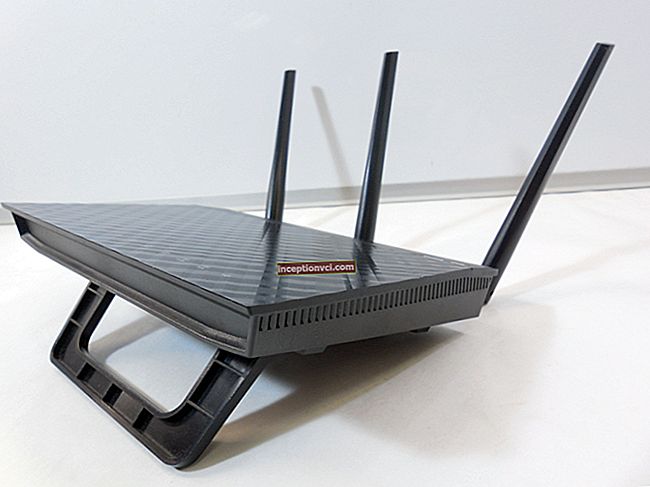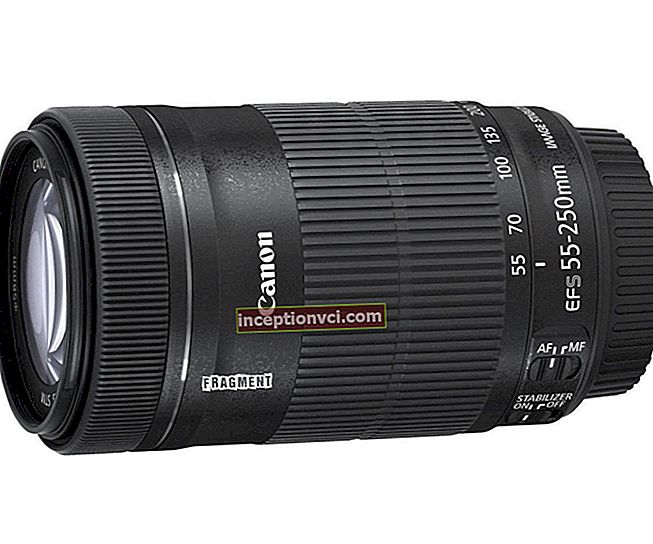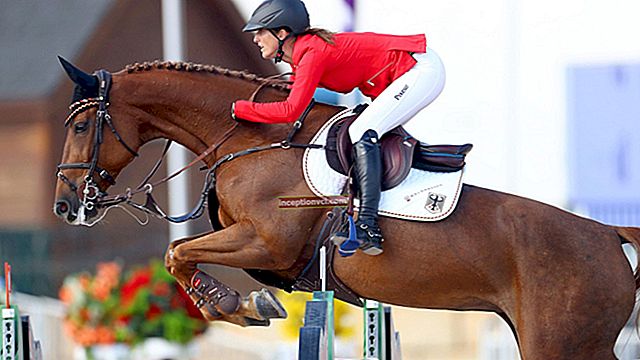Canon EOS 1000D review
Introduction
The Canon EOS 1000D (also known as the Digital Rebel XS) is a new entry-level camera designed to expand Canon's lineup. The camera is based on the older model EOS 450D and has almost identical body dimensions and similar controls. To keep the price of the camera down, Canon has slightly reduced most of the key camera features. So 1000D has a resolution of 10 megapixels, and model 450D -12, fewer AF points (7 - 9), smaller screen (2.5 -3 inches). However, these two cameras have a lot in common - the same Live View systems, the use of SD cards instead of Compact Flash, the EF-S 18 - 55mm f / 3.5-5.6 IS lens is included. Separately, I would like to note that this lens should dispel criticism directed at Canon for not offering an affordable image stabilization solution.
Design and use
The Canon EOS 1000D looks a lot like its big brother, the EOS 450D, with a plastic body with textured areas on the grip and back for better control of the camera while shooting. Like the 450D, it is a little awkward to hold the camera, as the relatively small body size of the EOS 1000D makes it difficult for people with large hands to feel comfortable. The most obvious external difference between the 1000D and 450D is the smaller 2.5-inch LCD screen, with the vertical row of 5 buttons being moved from their usual place to the left of the screen and scattered across the rear panel. The Canon EOS 1000D looks a lot more expensive than it actually is, and of course it's robust enough for entry-level cameras.

The camera comes with a new EFS 18-55mm f / 3.5-5.6 IS lens that offers a standard focal length range but adds image stabilization to the camera. This is an important addition given that the manufacturer does not offer built-in image stabilization. Although this limits the choice of lenses for use with this camera. I'd like to point out that both 1000D and 450D come with the same lens, so you won't lose anything by choosing a cheaper camera.
Proving its focus on the inexperienced user, the camera offers a range of automatic portrait, landscape, macro, sports and night portrait shooting modes. It is worth noting that for normal macro mode operation, you need a special lens, otherwise the camera will not be able to display objects in a 1: 1 ratio of the real size. For users who have reached a higher level, semi-automatic and manual modes are offered, these are the shutter priority modes that have already become standard, the aperture priority is programmed and manual, but here the manufacturer added a twist. All of these modes provide automatic depth of field, which, when used, gives a wider depth of field across the entire focal length.
Using these modes, you can adjust the ISO values to one of five positions from 100 to 1600, which is more than enough for most lighting conditions. When using these modes, the only question left is why the manufacturer didn't include an ISO 3200 setting given the excellent image quality at ISO 1600, and you can choose from three autofocus modes and six preset white balance options. When shooting through the viewfinder, it displays all the basic information of the current settings.
As mentioned earlier, the manufacturer has reduced the number of AF points in the camera to 7. In practice, this change is almost imperceptible, the camera focus adjusts very quickly in all situations, so it will not be a critical characteristic when choosing between the two cameras.The exposure metering system is mainly aimed at beginners, for whom the use of a permanent evaluating system will be optimal. On the other hand, experienced users will find it frustrating to use spot metering, which is very useful in difficult lighting conditions.

Most of the control buttons are located on the back of the camera, although removing the vertical row of 5 buttons made the overall control scheme more complicated. The camera offers quick access to continuous shooting mode, changing autofocus, changing exposure metering mode and access to Picture Styles, all of which you can change using a four-way rotary controller. On the top panel you will find a new ISO change button, this location provides easy access to this function when working through the viewfinder. Aperture and shutter speed settings are easily adjusted with the index finger using the control dial located behind the sensitivity change button. However, you still need to hold down the exposure compensation button to change aperture in manual mode, rather than just press it to switch between shutter speed and aperture.
The Live View system is borrowed from the older model. But nevertheless, the activation of this mode remains very difficult, since the initial activation is carried out through the system menu. Once enabled, Live View is activated by pressing the button located on the back of the camera. When using this mode, you can display a compositional grid and a very useful live histogram. The picture obtained in this case can be enlarged up to 10 times on the screen. Focusing is done by pressing the AF / AE Lock button, or by pressing the shutter button halfway. It is worth noting that the camera has two autofocus modes. First, the Quick AF mode works while the mirror is being raised, and you can hear a little noise caused by the camera mechanism. The second mode - Live AF uses the contrast of the subject to focus on it. The same mode is used in digital compacts, the main advantage is the complete absence of noise during operation. But, unfortunately, this mode is not perfect, it works slowly, focusing on the subject takes an average of 3 seconds, which is unacceptable for some shooting conditions. Live View can be controlled remotely using the software included with the camera.

The manufacturer has provided a dust removal system in the chamber; during cleaning, the sensor vibrates at a high frequency, which allows dust particles to be removed from the matrix surface. This allows you to slightly clean the matrix from dust, but, unfortunately, the particles that have adhered to it (grease, splashes) are not cleaned with this system. And you still need to periodically resort to manual cleaning. An addition to the cleaning system is the new development of the Dust Delete Data System, which allows you to correlate visible dust on the sensor and remove it after shooting.
The menu system used in this camera has been inherited from professional EOS cameras. The menu is organized using seven horizontal tabs and up to seven different options for each of them. Using this structure allows quick access to various parameters. Access to the most requested functions can be organized through a personal menu page using the new My Menu tab. All parameters are displayed on the main screen.
The camera is powered by the new LP-E5 battery pack, which has a higher capacity of 1080mAh. This should allow you to extend your shooting time from a single charge, according to the manufacturer, up to 500 shots. Also new is the move from CompactFlash to SD memory cards, which are more priced and affordable in today's market for the novice user that Canon is targeting.
As with all DSLRs, the 1000D has a viewfinder that uses the same penta mirror system as the 450D. But at the same time its magnification is equal to 0.81x, which is slightly less than the 450D model allows you to zoom in 0.87x. The 2.5-inch screen gives a very good, clear image and provides accurate reflection of exposure and color reproduction. By default, all current camera settings are displayed on the LCD monitor. This function can be turned off by pressing the Display button.

A very good set of software comes bundled with the camera: Canon's PhotoStitch application for creating panoramic shots, and a professional application for converting RAW files. Digital Photo Professional is certainly not the best RAW converter on the market, but it allows you to shoot in RAW format and then use your PC to do the exposure compensation. In addition to these two programs, the camera comes with the Picture Style Editor, which allows you to create Picture Styles on your computer, not on the camera.
Once you've taken a shot, the Canon EOS 1000D offers a wide range of options for analyzing and managing your shots. When you press the DISP button, detailed information about the image is displayed on the screen. So by clicking on it, a histogram of the image will appear on the screen and all data, including the shutter speed, time and date when it was taken, a second click on the same button calls up an additional RGB histogram on the screen. At the same time, it is possible to enlarge the image 15 times, and view the pictures in the form of small thumbnails of 9 pictures on one screen. The functions of deleting an image, rotating an image, viewing a slideshow, protecting an image so that they cannot be deleted, plus many different printing options are also available. Unlike some competitors, this model does not provide any styles or effects applied to the image during processing. All that remains is the Picture Styles function, which is the only way to customize your photos directly in the camera. Before applying any effect, the camera first shows how the effect will look, after agreeing to use the effect, the effect is applied to the copy of the image, thereby preserving the original picture.
Image quality
Canon EOS 1000D takes excellent quality pictures. When using values between ISO 100 and ISO 800, there is no visible noise in the images, which indicates good camera performance. A small amount of noise appears at ISO 1600 setting. Image stabilization using the supplied lens helps the EOS 1000D keep up with its competitors. Thanks to the lens shift in the lens, pictures are always taken clearly, whether when shooting handheld in low light conditions, and when using lenses with long focal lengths. In addition, the Canon EOS 1000D handles chromatic aberration very well, with a small amount of purple and blue fringing appearing at the edges of the photo only when the subject is high in contrast. The ten-megapixel in-camera sensor produces images that are a little soft at default settings, and ideally require further processing in photography software. When using the built-in flash indoors, there is no red-eye effect in the pictures and the backlight of the photo is soft and does not cause harsh shadows. We add that this model is very well suited for night photography, the maximum shutter speed available in the camera is 30 seconds, which is more than enough for most shooting situations.
Here are some examples of photos taken with the Canon EOS 1000D:




Conclusion
The EOS 1000D is a worthy addition to Canon's lineup. The capabilities of the camera are well suited for both novice users looking to switch from a compact camera to more experienced DSLR owners looking for an inexpensive backup camera.









